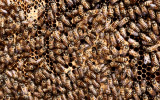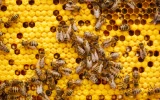What Happens If You Block the Entrance To a Bees Nest?
The bees, when threatened, will be distressed and will defend their nest. They will not hesitate to sting if they feel provoked, and that puts you in danger. Understanding the potential consequences of blocking a bee's nest is essential to ensuring your safety and the safety of the bees.
By blocking the entrance to a bee's nest, the bees inside the walls of a home will become agitated and start to swarm. They'll buzz around, attempt to find a way through, but in their desperation, they'll become more prone to stinging. The pest control team will need to take extra caution to ensure everyone's safety.
The bees inside the walls of the home feel threatened by the blocked entrance and become agitated. In this article, you will learn what will happen if you block the entrance to a bee's nest from the perspective of the bees inside the walls of a home and pest control.
Summary
- Blocking the entrance to a bee's nest is a way to control its population.
- When their entrance is blocked, bees will immediately become agitated and start to swarm.
- Looking from a bee's perspective, they will start to create ways to escape their nest.
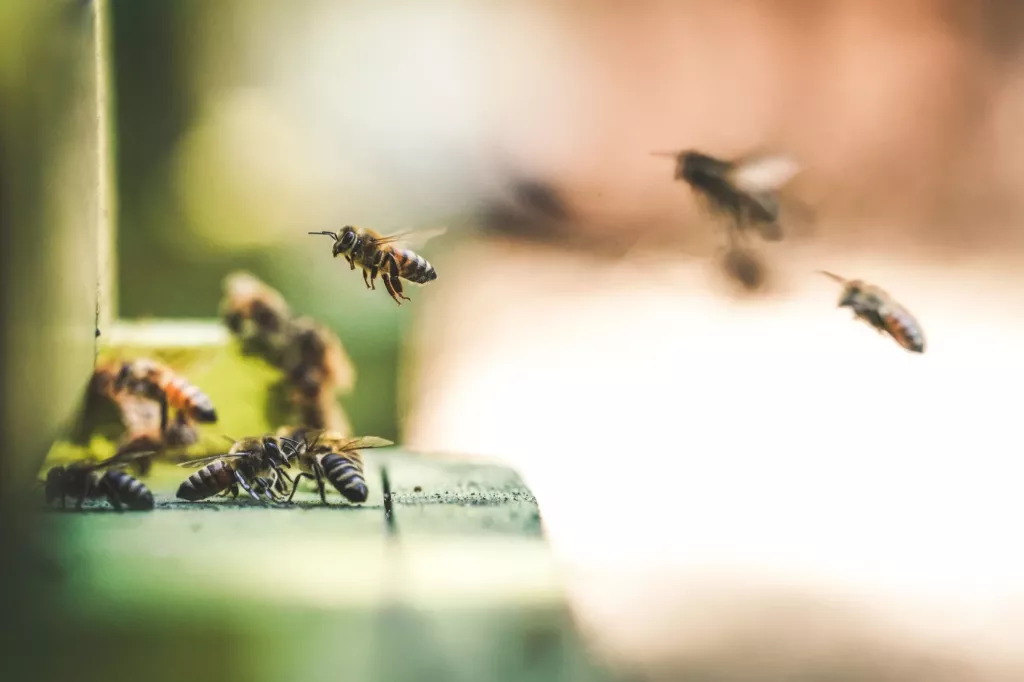
On this page:
Blocking the Entrance To A Bees' Nest
Blocking the entrance to a bee's nest is a common way to control a bee population in a particular area. It is important to take precautions when doing this to avoid disturbing the bees too much and putting yourself in danger.
First, you should identify the nest entrance. To achieve this, locate a little crevice in the ground or a gap in a wall where the bees enter. Once the entry has been found, it should be blocked off with a piece of wood or other substance. To prevent bees from entering or escaping through the material, make sure it is securely attached.
Once the entrance is blocked, it is important to monitor the nest for a few days to ensure that the bees have not found another way to enter the nest. If there is still activity around the nest, it may be necessary to use a pesticide to get rid of the bees. This should only be done after all other methods have failed and you are sure that the bees will not be able to enter the nest.
Blocking the entrance to a bee's nest is an effective way to control bee populations in a particular area. It is important to take precautions and monitor the nest to ensure that the bees have not found another way in. If all else fails, a professional pest control company may be necessary to help remove the bees.
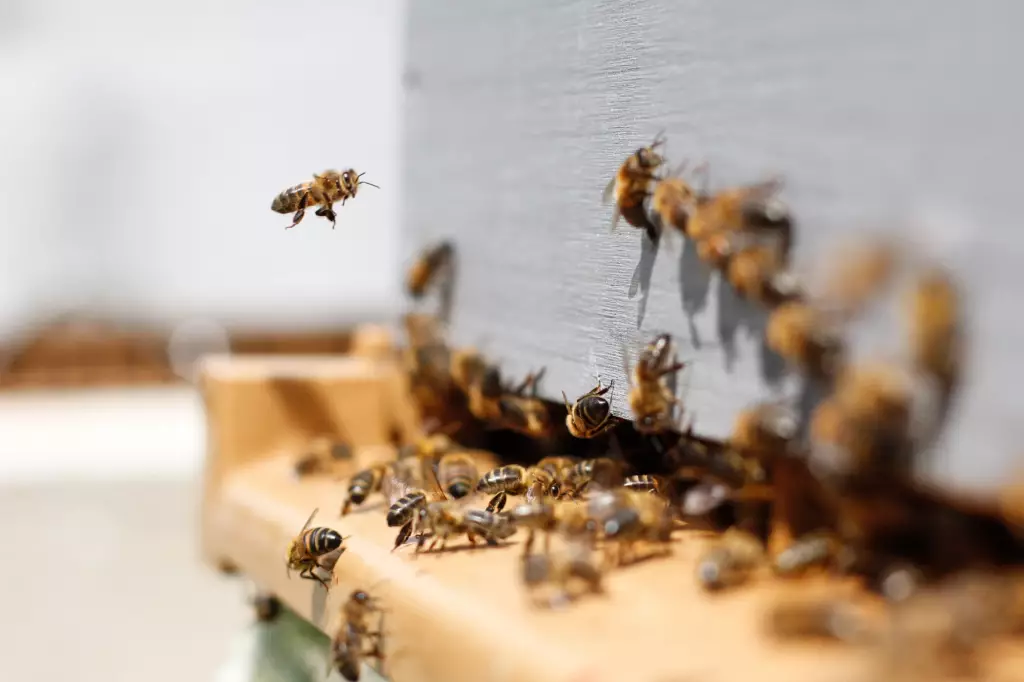
What Happens Inside The Bees' Nest When The Entrance is Blocked
When the entrance to a bee’s nest is blocked, the bees inside will immediately become agitated. Here are the things that they will do.
Bees will buzz and flap their wings
They will buzz and flap their wings in an attempt to break through the obstruction. If the obstruction is small enough, some of the bees may be able to squeeze through the opening. The bees won't be able to flee if the impediment is substantial or fully clogs the entrance.
The bees will also become agitated and begin to buzz more loudly. They may also start to vibrate their wings to create enough heat to melt the wax and open the entrance. The bees may also send out scouts to search for another entrance.
Bees chewing the obstruction
The bees inside the nest will become increasingly desperate to escape, using whatever means necessary. They will attempt to chew through the obstruction, using their mandibles to break it down. The bees will get more agitated and turn to alternate escape routes if the obstruction cannot be removed.
If the obstruction remains in place, the bees will begin to construct a new entrance to the nest. This new entrance is usually located near the original entrance, and the bees will work diligently to create a new path to the outside. Once the new entrance has been created, the bees will resume their normal activities. They will forage for food, collect nectar and pollen, and tend to the young in the nest. A bee's nest should have any impediments removed as soon as feasible.
The bees may become agitated, and the temperature within the nest may increase if the impediment is not removed. The bees and their offspring may be in danger if this happens.
Bees producing wax
When the entrance to a bee’s nest is blocked, the first thing the bees will do is attempt to remove the obstruction. If the bees are unable to remove the obstruction, they will begin to produce more wax to build around the obstruction, effectively sealing it off from the inside.
Bees running out of honeycomb
If the obstruction remains in place, the bees will begin to consume the honeycomb inside the nest to survive. This can be detrimental to the health of the colony, as it reduces the amount of honey available for food. If the obstruction remains long enough, the bees may eventually abandon the nest and relocate to another area. This is their last resort, as it can take a long time for a new nest to be established and the colony to recover.
The obstruction is causing tremendous distress in the bees, as it prevents them from foraging for food and gathering the nectar and pollen needed to sustain their colony. This could be devastating to the bees and their hive.
The Importance of the Entrance To A Bees' Nest
The entrance to a bee's nest is vital for the health and survival of the colony.
- It serves as a gateway for the bees to enter and exit the hive, as well as protecting them from predators and the elements.
- The entrance also helps to regulate the temperature and humidity of the hive, allowing the bees to stay comfortable and productive.
- Without a proper entrance, the bees could become stressed, and the colony could suffer.
- The entrance also serves as a way for the colony to signal to other bees that a hive is present.
- Bees use the entrance to communicate with each other and alert intruders that they should not enter. This means that the entrance is an important part of the hive's defense system, and can help protect the colony from harm.
- Finally, the entrance is also a way for the bees to transport pollen and nectar back to the nest. This is essential for the survival of the colony, as the bees rely on these resources for food.
- Without a proper entrance, the bees would be unable to bring in enough resources to sustain the hive.
In summary, the entrance to a bee's nest is an essential part of the hive. It serves as a gateway for the bees to enter and exit and helps regulate the temperature and humidity within the hive. It also helps protect the hive from predators, while allowing the bees to come and go as they, please.
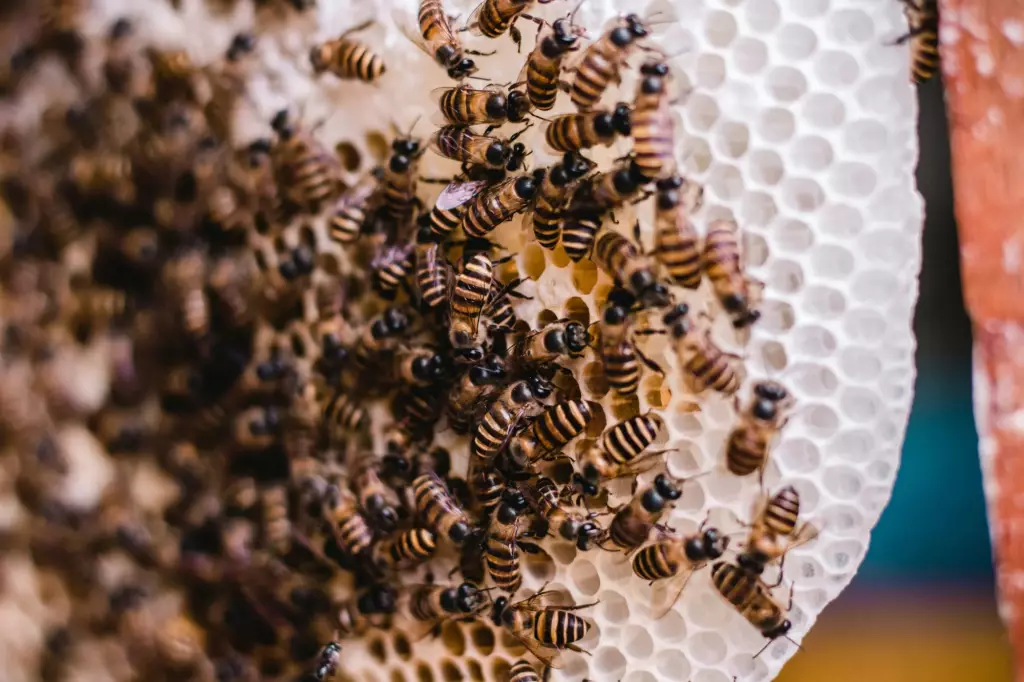
Bees Inside the Walls of A Home and Pest Control
Bees that have built their nests inside the walls of a home can cause a variety of issues, including the potential for stinging and damage to the structure of the home. When a bee's entrance is blocked, it will often try to find another route out of the wall. This can cause further damage to the structure, as well as an increase in bee activity around the home.
To prevent this, homeowners can take steps to block the entrance or contact a pest control professional. Pest control professionals can identify the species of bee and determine the best course of action to remove them from the walls. This may involve the use of insecticides, fumigation, or a combination of both.
If the entrance is blocked, they can also use a vacuum cleaner to safely remove the bees from the walls. Once the bees have been removed, it is important to take measures to prevent them from returning. This may involve sealing any possible entry points, such as cracks, gaps, and holes in the walls.
